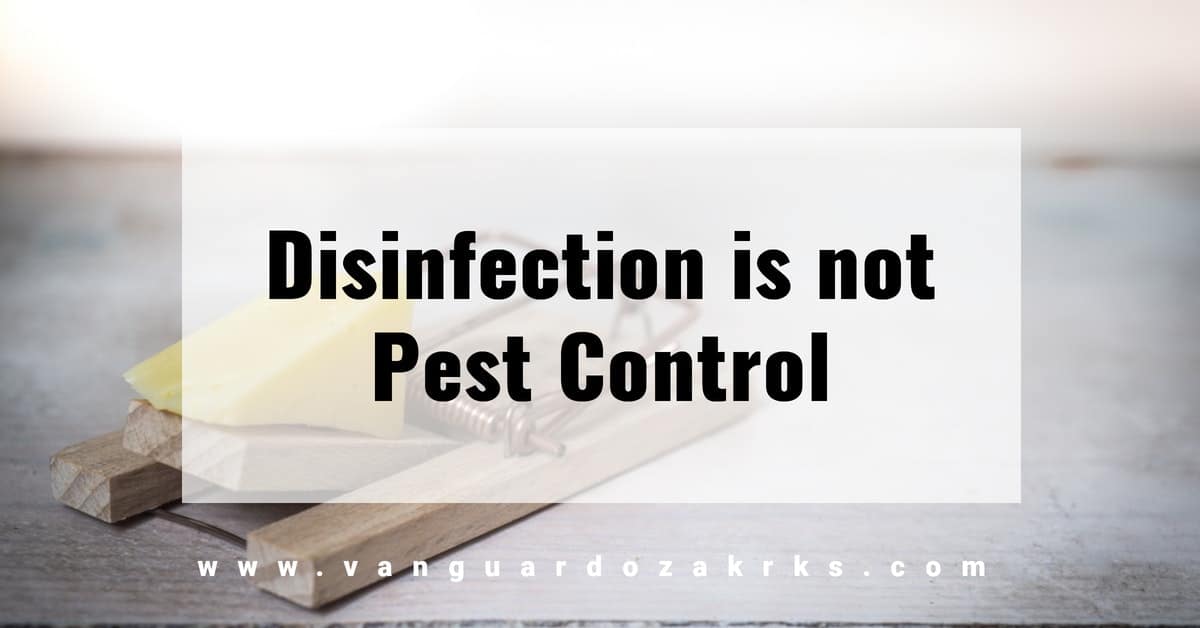The increased public demand for disinfection services has underscored a lack of information regarding the nature of germs and bacteria, as well as the function of infection prevention and control services.

The Function and Nature of Infection Prevention and Control Services
As COVID-19 infections and deaths increase across the United States--underpinning the annual toll taken by influenza and norovirus outbreaks--interest in facility infection prevention and control programs have grown.
Unfortunately, there appears to be some confusion regarding the nature and function of cleaning and disinfection services as it relates to general facility hygiene, as well as the control and prevention of viral outbreaks.
The misconception revolves around the mistaken belief that--akin to pest control services--facility disinfection is a 'one-and-out' type of service whereby the pest or virus is eliminated after a single cleaning, and only essential followup services are required later on.
Sadly, that is not the case.
Understanding the Difference Between Cleaning, Sanitizing, and Disinfection
The first step to cleaning up the misconceptions regarding the nature and function of infection prevention and control services is to understand the difference between cleaning, sanitizing, and disinfection.
Cleaning--soap/detergent and water--removes dirt, oil, and some germs and bacteria from surfaces, and is a critical first step in any disinfection process.
Sanitizing a surface kills or removes 99.9 percent of bacteria on a surface, but does not kill or remove viruses or fungi.
Disinfection kills 99.999 percent of germs, bacteria, viruses, and fungi on a surface as long as the laytime, or surface dwell time, is adhered to.
Both sanitizing and disinfection require the surface to be cleaned before application to ensure efficacy, as dirt and oil will significantly reduce the effectiveness of the chemicals.
To sum up:
- Clean first with soap or detergent and water to remove dirt and oil.
- Apply sanitizer or disinfectant chemicals.
- Wait for the indicated product dwell time to elapse, then;
- Wipe off any residue left over after the surface dwell time has expired.
How Long Does it Take a Surface to Become Recontaminated?
In a completely sanitized facility, germs, such as influenza, norovirus, or the coronavirus, will typically need to be reintroduced by a contaminated individual.
This will typically occur as a result of touching a contaminated surface outside of the facility or being infected themselves, combined with low-quality hand-hygiene and awareness.
The challenges emerge in several forms:
- A carrier may be asymptomatic or unaware they are infected.
- The carrier may not even be infected, merely contaminated--most commonly on their hands or their shoes, or;
- The carrier could be sick, know they are sick, but come into work or go out in public anyways due to a multitude of reasons.
Regardless, studies have shown that a single person can, directly and indirectly, contaminate half an office in a few hours.
Bacteria, on the other hand, can return within an hour.
In a 2014 study, researchers sterilized four restrooms at San Diego University.
According to the results of the study;
Within one hour of sterilization, the bathrooms were completely recolonized with microbes — just as plants rapidly arrive and populate a newly emerged island. Fecal bacteria dominated, including on toilet seats and on soap dispensers — about 45 percent of the bacteria there were of fecal origin.
In all, the scientists found genetic traces of more than 77,000 distinct types of bacteria and viruses.
Interestingly, although restrooms that were left open for use for up to two months were cleaned regularly with soap and water, the communities of microbes found there remained relatively unchanged for the full eight weeks of the study.
References & Resources
- The Difference Between Cleaning, Sanitizing and Disinfecting
- How To Clean and Disinfect Schools To Help Slow the Spread of Flu
- Office Germs: Viruses Spread Everywhere in Just Hours, Study Shows
Takeaway
High-quality infection prevention and control services focused on cleaning for health require daily applications of both cleaning and disinfection products.
High-performance tools, such as microfiber and electrostatic disinfection appliances, increase the efficacy of the cleaning and disinfection services while reducing the amount of time and labor required to service a facility, typically resulting in reduced costs.
There is no 'one-size-fits-all' solution for every facility.
Requirements are based on foot traffic, seasonal outbreaks, and the type of environment.
For example, a school in the middle of flu season should be cleaned and disinfected every day, starting before the start of the outbreak, and continuing for several weeks after to ensure all the germs are removed entirely.
During the summer, when the school is unoccupied and the threat of influenza has abated, cleaning schedules are commonly safely reduced to weekly services, sometimes less.
One of the most critical components of a quality, high performance clean for health first program is the skill level and knowledge of the janitorial service provider, who is responsible for preventing one of the most significant challenges in the cleaning industry--surface cross-contamination.
Preventing surface cross-contamination requires a well-documented cleaning plan, high-quality tools, training, and dedication--qualities commonly absent from in-house cleaning staff, underscoring the importance and value of outsourcing to an experienced service provider.
Contact us today and discover why Vanguard Cleaning Systems® is the Standard of Clean® for businesses throughout Northwest Arkansas, Missouri, and Oklahoma.
In Oklahoma, dial 918-960-4450
In Arkansas, dial 479-717-2410
In Missouri, dial 417-812-9777
